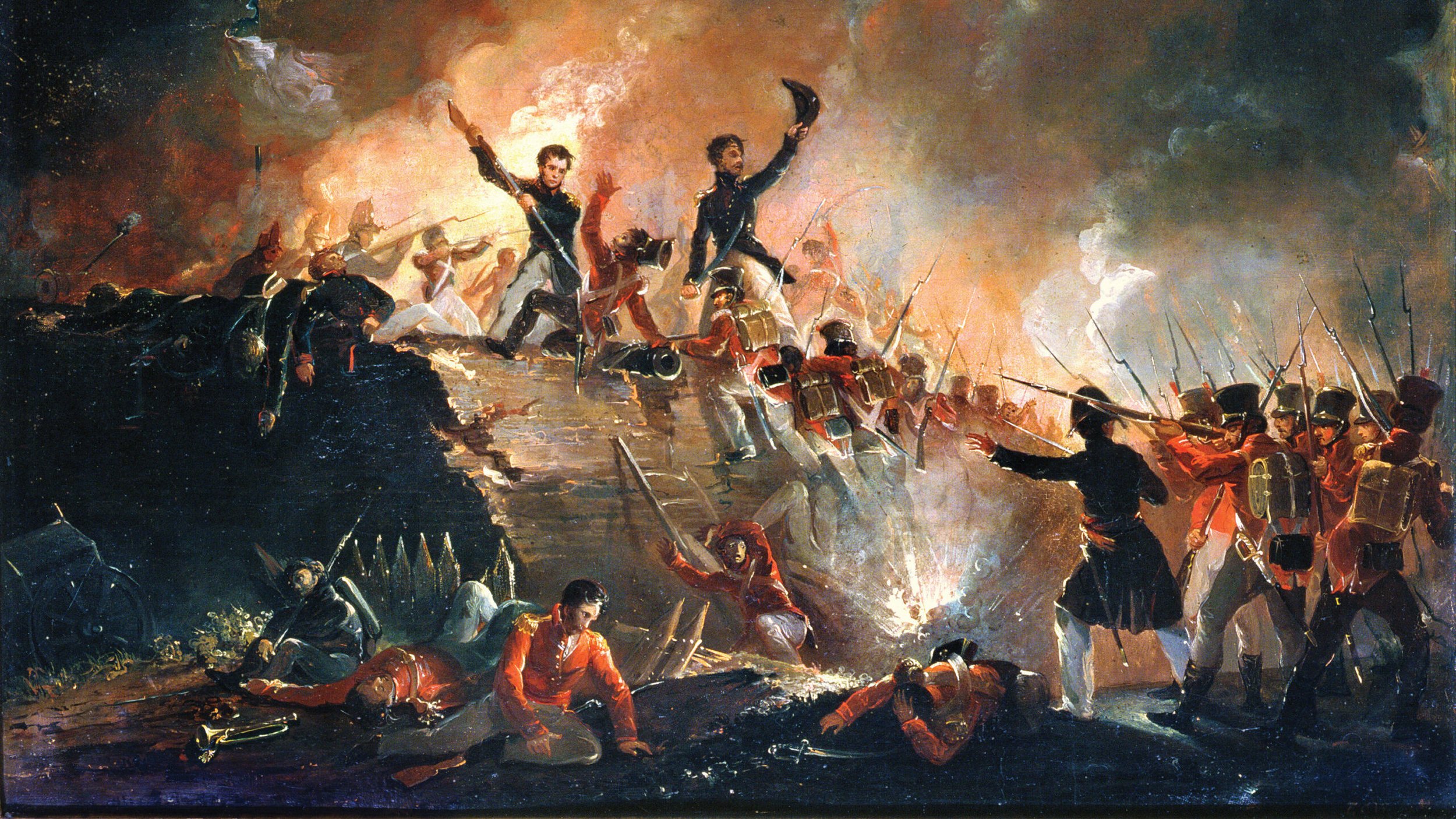A Deplorable State…
Visitors to the Maritime Museum are inundated with the history of the U.S. Brig Niagara, the official Flagship of the Commonwealth of Pennsylvania. For most, the story is centered on the Summer of 1813 and the events leading up to and including the American victory at the Battle of Lake Erie however, her story is one which transcends that pivotal summer. In the days and weeks following the Battle of Lake Erie, the US Navy’s Presque Isle Station fell into a state of upheaval and distress. Rather than return to Erie and regroup, Perry elected to follow General William Henry Harrison’s exploits on land - all the while, leaving Jesse Elliott to take charge of his duties. A little over a month later, Perry sought to return to duty on the high seas, to which he was awarded a new assignment. On the 25th of October, 1813, Perry resigned from Erie and returned to New England to take charge of a squadron based out of Newport, Rhode Island. The trip home lasted three weeks. All along the way, he was met by enthusiastic crowds, gifts, and banquets.
While Perry was off being enamored by his fellow countrymen, what he left in Erie was about as opposite a state as you could possibly find. The British were quick to move on to Fort Niagara as well as the settlements at Buffalo and Black Rock. With the latter, the Americans lost “two of the prize vessels, the Little Belt, Chipaway, as well as the Sloop Trippe.” Jesse Elliott, in a state of distress, wrote to the Secretary of the Navy on the 5th of January, 1814, requesting a “force of 2,000 militia at [Erie], until the middle of March” to prevent a surprise attack like what was happening in Western New York State.
Presented to Perry by citizens of Boston, MA
Courtesy of Bridgeman Images
The British schemed to destroy or recapture the vessels they lost at Put-In-Bay and to build a new shipyard on the Lakes. Fortunately, for those at Presque Isle, the winter of 1814 was mild – preventing a British crossing of the lake due to limited ice coverage. Chauncey ordered Elliott to “prepare the Niagara and Lawrence” and “proceed into Lake Huron as soon as the ice [would] permit”. The goal for this was to further reduce the enemy presence on the Lake. Incidentally, Elliott never delivered on this order as, shortly after Chauncey sent this letter to Elliott, he requested leave from Erie. In his place, Chauncey sent Captain Arthur Sinclair to assume command of the naval force at Erie.
Arthur Sinclair II, most unfortunately, has faded into the back pages of history. Sinclair was born on February 28, 1780, in Mecklenburg, Virginia. His father, Arther Sinclair I, had served in the Royal Navy during the War of Jenkins Ear (or Guerra del Asiento). Sinclair then made the decision to serve in the Continental Navy during the American Revolutionary War. In 1798, Arthur joined the US Navy as a Midshipman and was present aboard Constellation during the capture of the French frigate L’Insurgente on February 9, 1799, during the Quasi-War. His young career afforded him further action as he became attached to the Mediterranean Squadron from June 1804 to July 1806. He once more took part in a warfighting fleet, launching attacks on Tripoli aboard USS Essex.
At the onset of the War of 1812, Sinclair was already in command of Argus. With this vessel, Sinclair was assigned to the North Atlantic Squadron and seized many prize ships. It wasn’t long however before he was sent to the Great Lakes to serve in Commodore Isaac Chauncey’s squadron. His first assignment was to command General Pike on Lake Ontario. Sinclair’s “valorous” exploits eventually led him to gain enough recognition for him to be awarded command of Niagara and the Presque Isle Squadron.
USS Constellation, Courtesy of Naval History and Heritage Command
Courtesy of Peter Rindlisbacher
Upon arrival in Erie, Sinclair described the situation as being “deplorable”. The winter of 1813-14 was exceptionally difficult for those stationed at Presque Isle. Vessels were lacking repairs and “in no state of forwardness for service”. Over the course of the winter, morale had plummeted, and pneumonia and smallpox had ravaged the naval station, killing many. Legend has it that the bodies of those who succumbed to their illnesses were dumped into the water of Little Bay, granting this pond the nickname “Graveyard Pond”. To pay homage to this terrible winter, surviving sailors renamed the waters “Misery Bay” - a name which persists to this day.
Sinclair also noted that very few officers were still at Erie, “many of whom are unfit for service”. Expenses and accounts were out of control and crime had forced the arrest of many throughout the station. Almost simultaneously, Sinclair began to corral the chaos beginning first with ordering the remaining prize ships, which were left behind at Put-In-Bay, to return to Erie for repairs as well as to prevent recapture by the British. All effort was to be put into preparing for the coming campaigning season of 1814. To make matters worse, there was still the issue of obtaining supplies and food. In late winter, intel made it to Sinclair that there was a considerable amount of flour and “bread stuff” in “five or six large manufacturing mills” guarded by a small company at Port Dover in Ontario. With this message in hand, the 34-year-old naval officer sent correspondence to US Army Colonel John Campbell to prepare for a strike on the Port Dover mills. On May 14th, 1814, American troops landed at Port Dover when Campbell opened a line of battle. The Americans encountered very little resistance and eventually set fire to every building they could citing retribution for the British attack on Buffalo four months earlier. The Anglo-Canadians were incensed and would eventually use the Port Dover incident as justification for the attacks on the Chesapeake, Washington D.C., and Baltimore later in 1814.
Back at Erie, Sinclair continued to work on reigning in the mess within his ranks. He started by releasing prisoners who were arrested for “trivial causes”. Amongst these was Purser McGrath, along with another officer who “threw a volunteer overboard” prior to Sinclair’s arrival. In late May, Sinclair reported “peaceful harmony” across his station however, rumors began to arise that Napoleon had been defeated in Europe, allowing the British to send seasoned veterans to aid their war effort in North America.
Focus shifted back to Lake Huron, and the impact these reinforcements could have in securing British control of the Upper Great Lakes. On June 19, 1814, Sinclair departed Erie with Lawrence, Niagara, Caledonia, Scorpion, and Tigress and arrived at Detroit from Erie two days later. Lady Prevost and Caledonia were left behind, having “much too heavy draft to pass through the straits.” Sinclair had been ordered to Lake Huron to explore several ports and “ascertain the [enemies force]”, harassing and disrupting British operations on the lake.
Arthur Sinclair
George Croghan
For the campaigning season of 1814, the Americans focused on retaking Fort Mackinac as well as to sever British trade and supply routes in the interior. The Secretary of the Navy, William Jones, was quick to enforce that the assault on Fort Mackinac was to be supported by the Erie-based squadron - no exceptions would be made. On July 3, 1814, Arthur Sinclair’s fleet sailed from Detroit, Michigan, carrying a force of 700 soldiers under the Command of Lieutenant Colonel George Croghan. The force included companies from the 17th, 19th, and 24th US Infantry and volunteers from the Ohio Militia.
Part of this effort was to zig-zag across the lake, all the while picking off British depots including the abandoned British post on St. Joseph Island and Sault Ste. Marie. While the plan succeeded in doing a little bit of damage, this gave the British ample notice to prepare for an assault. On July 26, 1814, Sinclair’s ships arrived off Mackinac. Sinclair quickly exclaimed that Mackinac was “a perfect Gibraltar, being high inaccessible Rock on every side except the West.”
This presented a major challenge for Sinclair’s gun crews as they were unable to elevate their guns high enough to hit their intended targets. For two days, Sinclair’s guns bombarded the fort however, most of his shots failed to reach. Fog and foul weather forced the American ships to push out before returning a week later. American guns began softening the wood line around the fort in the hopes of drawing out Natives.
For the Lt. Colonel, there was very little faith in the operation. On August 4th, things would come to a head when, waiting for the Americans were Lieutenant Colonel Robert McDouall and some 450 British regulars, militia, and Native allies. The ensuing Battle of Mackinac Island was a total failure on the part of the Americans who failed to break the British line. All in all, Croghan lost several of his staff and approximately 75 men whereas the British totaled around a dozen casualties.
As the campaigning season of 1814 was drawing to a close, Sinclair set off for the Nottawasaga River in search of HMS Nancy, a merchant vessel that had been crucial to running supplies, communications, and personnel to Michilimackinac. HMS Nancy was, at this point, the only British warship on Lake Huron and was commanded by 23-year-old Lieutenant Miller Worsley. On August 14, while at the helm of his flagship Niagara, Sinclair’s men spotted the quick HMS Nancy and fired on her. The shelling was enough to destroy Nancy and a British blockhouse. With that said, Worsley was able to flee into the wilderness. Sinclair made his way back to Erie, leaving two schooners to maintain control of Lake Huron via the Nottawasaga River. On a cloudy night, the 3rd of September, a group of oar boats, led by Lieutenant Miller Worsley, Nancy’s previous captain, captured Tigress with ease. Still flying her American flag, Worsley used Tigress to then capture Scorpion two days later. Both ships serve the British Navy until the end of the war; Scorpion, renamed Confiance, and Tigress as HMS Surprize. News of their loss came to Sinclair in late October, carried by five escaped American prisoners. By late Fall, the close of the campaigning season, Captain Sinclair ordered the return of all vessels under his command to Presque Isle station.
Collection ID: FN94.2.1, Cannonball -
Mounted on a circular wood base, the 32 pound iron shot was presented "in peace and friendship to the crew of the U.S. Brig Niagara" on July 28, 1994. The ball is said to have been fired by NIAGARA at the British Schooner NANCY, August 13 - 14, 1814, when NIAGARA's Captain Arthur Sinclair took NIAGARA, TIGRESS, and SCORPION into Nottawasaga Bay, off Lake Huron. He hoped to ambush the schooner, which was serving as a supply ship, but hadn't realized NANCY was there and hidden, towed up the Nottawasaga River (near present day Wasaga Beach, Ontario). Lieutenant Mill Worsley, RN, ultimately destroyed the ship rather than surrender her cargo to Sinclair.
With the close of the campaigning season, the original US Brig Niagara’s story was all but written. In 1820, in an effort to preserve her hull, she was rather unceremoniously scuttled alongside the alleged resting place of those who crewed her at the Battle of Lake Erie in Presque Isle’s Misery Bay. She would rise from the murky depths in 1913, 100 years after her heroic victory on the western end of Lake Erie thanks to some of Erie’s most skilled craftsmen. Today, Niagara sails with the stories of all of those who worked so hard to construct each iteration of the Brig, as well as those who served on ships just like her.








